Freehand tattoos are not for the faint-hearted—and that’s exactly what makes them extraordinary. Unlike stencil-based designs, freehand tattoos are drawn directly onto your skin by the artist, free from pre-printed outlines. It’s raw. It’s intuitive. And it’s one of the most daring ways to let your tattoo artist’s creativity—and your personal story—come to life in real time.
For those who want something totally unique, something that no one else on the planet has, freehand tattoos are a powerful option. They blur the line between traditional tattooing and freestyle art. Whether it’s a flowing sleeve, an abstract motif, or a culturally inspired piece that follows the curves of your body, freehand designs are tailored to your anatomy and your energy.
In this post, we’ll break down how to choose a freehand tattoo, the best placements for flow and balance, how to care for your fresh ink, and what to expect from this bold tattooing method. If you want a design that’s one-of-one, spontaneous yet intentional—this guide is for you.
How to Choose the Right Freehand Tattoo
Choosing a freehand tattoo is all about trust, connection, and collaboration. You’re not just picking a design off the wall—you’re allowing your artist to draw inspiration from your story, your body, and their own vision.
Start by finding an artist whose style aligns with yours. Browse their portfolio and look specifically for freehand work—lines that flow naturally, designs that curve around the body, and pieces that seem like they were born on skin rather than paper. A good freehand tattoo artist has not just technical skill, but a strong artistic instinct.
Next, be clear on what you want to express. While the design will evolve organically, it helps to share your themes, symbols, or emotions. Let the artist translate those into forms, shapes, or lines that flow naturally across your body. Whether it’s tribal, abstract, floral, or illustrative, freehand work should feel like a living extension of your own movement.
Finally, trust the process. You may not know exactly what it’ll look like until it’s sketched on you—and that’s the magic. Freehand tattoos live in the moment, guided by collaboration and intuition.
Tattoo Placement Guide for Freehand Tattoos
Freehand tattoos shine brightest when the placement enhances the design, and vice versa. Because they’re sketched directly onto your skin, freehand pieces can follow your natural contours, bone structure, and muscle tone in a way stenciled tattoos simply can’t.
Arms and sleeves are some of the most popular spots for freehand work, especially for designs that flow like waves, smoke, or tribal patterns. The shoulder to chest and upper back are also excellent canvases—perfect for large-scale work with smooth transitions and layered storytelling.
Legs and calves offer elongated surfaces ideal for free-flowing geometric shapes or culturally inspired art. Want something bolder? The side of the neck, hips, or rib cage are high-impact placements where curvature and movement influence the design in striking ways.
Because placement affects how the design unfolds, many freehand tattoos end up larger and more organic than planned. That’s not a downside—it’s how the art breathes. Be open to the flow.
1. Abstract Freehand Tattoo
Abstract freehand tattoos are characterized by their lack of a defined shape or structure, focusing instead on unique, flowing lines and patterns that symbolize movement and emotion. These tattoos are often created without reference to any pre-existing design, meaning the artist allows their creativity to guide the process.
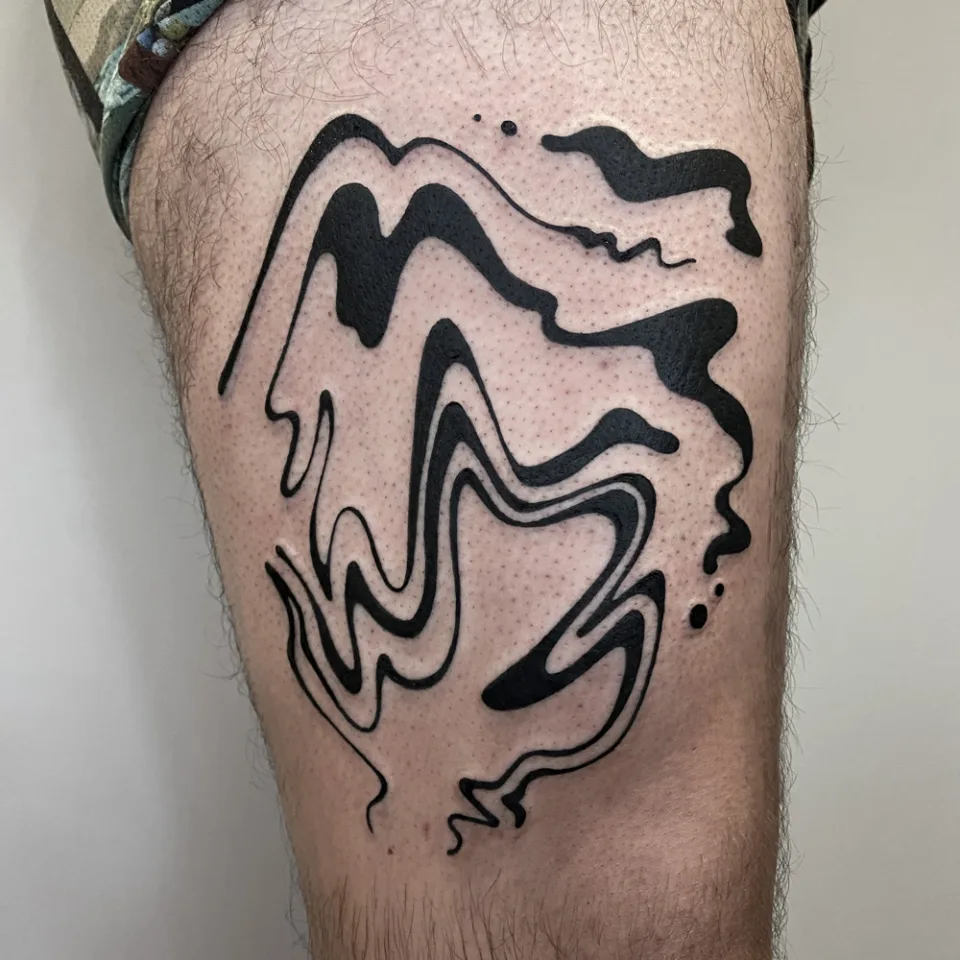
The randomness and spontaneity of these tattoos make them a perfect choice for those seeking something deeply personal and meaningful. The freeform nature of abstract tattoos also allows them to be customized according to the body’s natural contours, enhancing the organic feel of the design. Whether it’s an ethereal shape or a series of bold, sweeping lines, an abstract freehand tattoo offers individuality and artistic expression.
2. Floral Freehand Tattoo
Floral freehand tattoos are a popular and beautiful option for those who want a unique take on traditional botanical designs. These tattoos are created by drawing freehand directly onto the skin, often resulting in intricate, detailed flowers that blend seamlessly with the body’s shape.
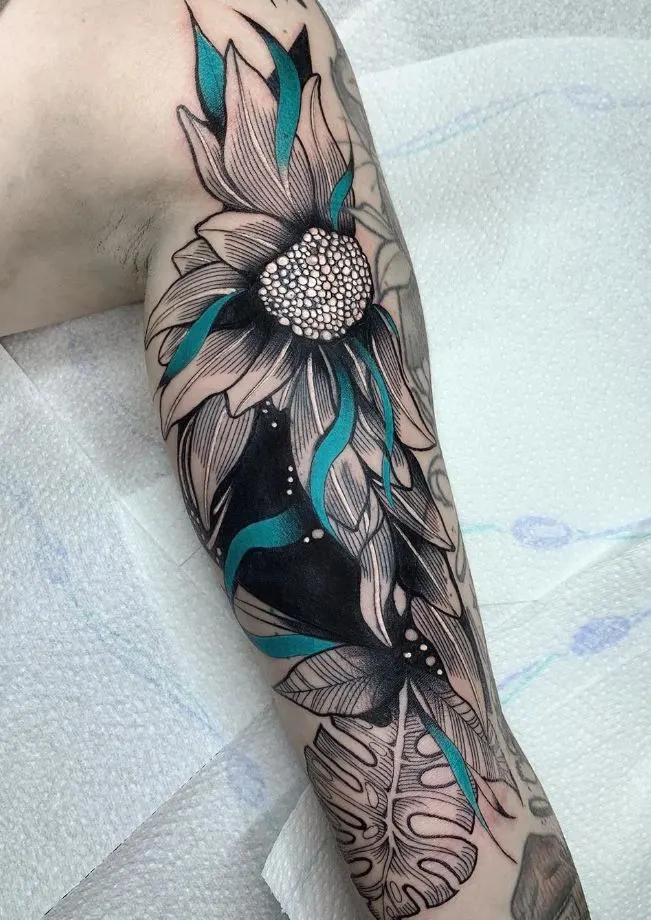
The natural flow of the design can complement any area, whether it’s a large piece on the back or a more delicate design on the wrist or ankle. The beauty of floral freehand tattoos lies in the fluidity of their lines and shapes, which can be customized to represent different meanings such as growth, beauty, and renewal. These tattoos are perfect for those who appreciate nature and want a design that feels alive and dynamic.
3. Geometric Freehand Tattoo
Geometric freehand tattoos combine precision and creativity, resulting in stunning designs that feature sharp lines, angles, and shapes. Unlike traditional geometric tattoos, which are typically drawn using stencils or templates, freehand geometric tattoos are created directly on the skin, allowing for more fluidity and movement within the design.
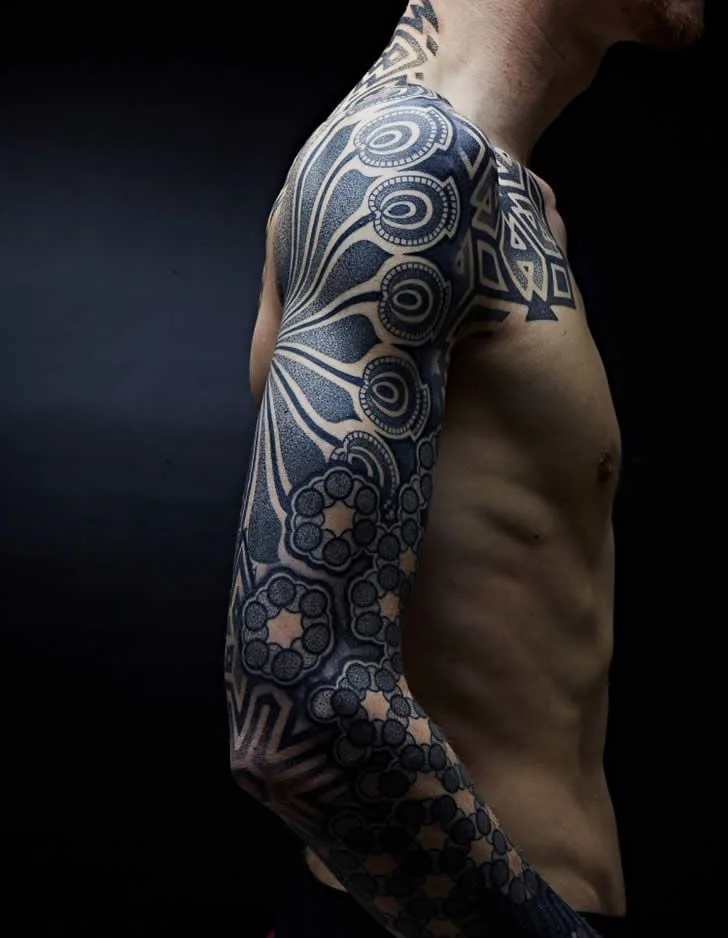
These tattoos often incorporate symmetrical patterns, such as mandalas, triangles, or sacred geometry, which can symbolize balance, harmony, and unity. Because the design is drawn freehand, the artist has the freedom to adapt the shapes and patterns to suit the body’s natural form, creating a tattoo that is both visually striking and personal.
4. Animal Freehand Tattoo
Animal freehand tattoos offer a way to express one’s connection with animals and nature in a deeply personal and artistic way. Instead of relying on pre-made designs, the tattoo artist sketches the animal directly onto the skin, allowing for a fluid and dynamic depiction that captures the essence of the creature.
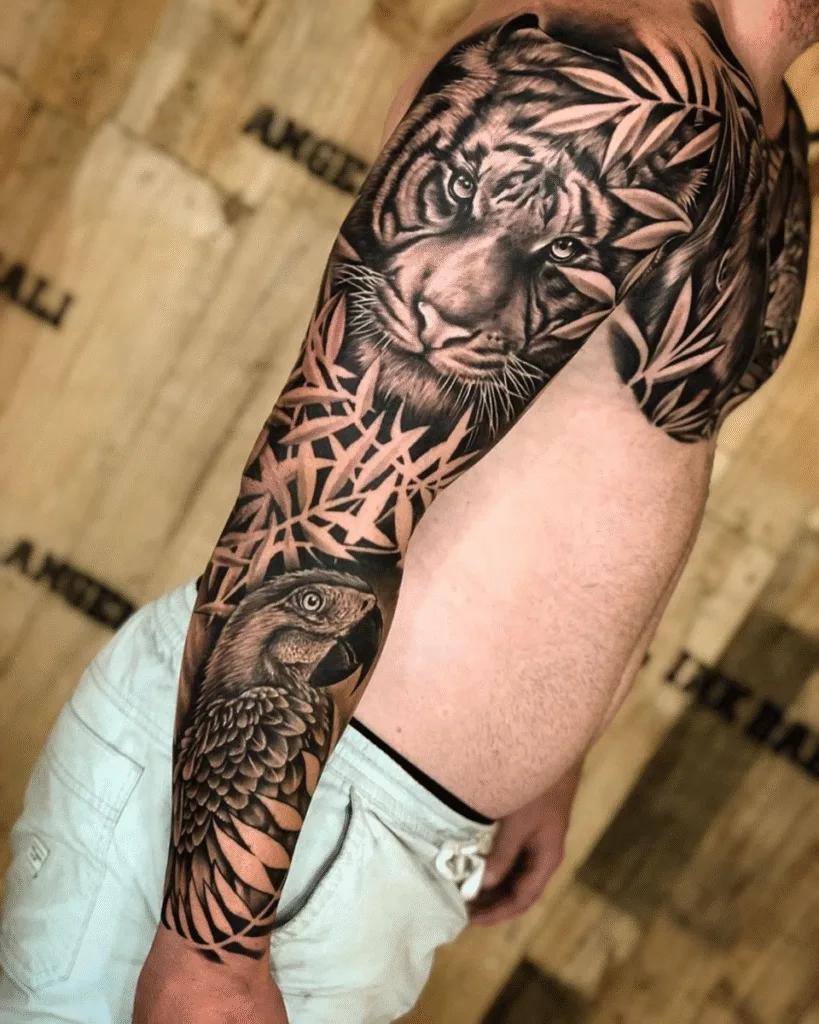
Whether it’s a lion’s mane flowing across the arm or a bird soaring down the back, the lack of boundaries in freehand tattooing lets the artist create a tattoo that feels alive and organic. These tattoos can range from realistic depictions of animals to more abstract or stylized representations, each adding a unique dimension to the wearer’s personality and connection with nature.
5. Mandala Freehand Tattoo
Mandala freehand tattoos are intricate designs that typically consist of geometric patterns radiating from a central point. When drawn freehand, the mandala becomes an organic and flowing design that feels as though it was created specifically for the body. Unlike stenciled mandalas, which often feature repeating patterns, freehand mandalas incorporate a sense of fluidity and custom design that adapts to the natural contours of the skin.
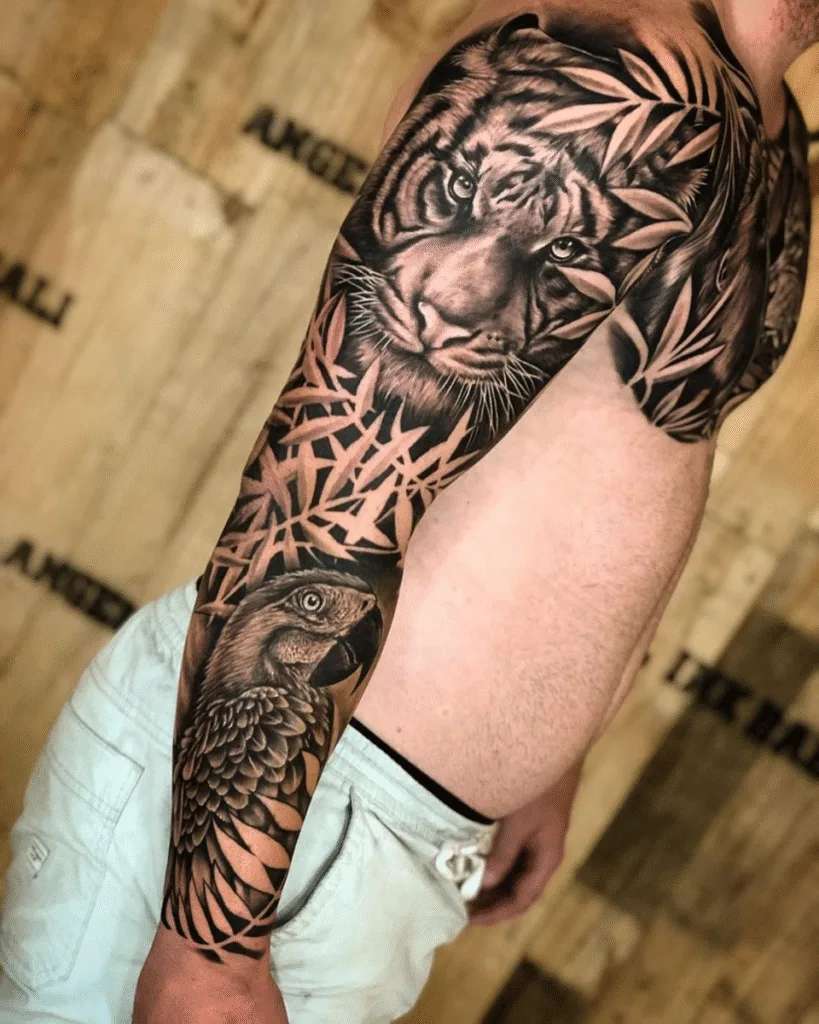
The symmetry of the mandala can represent balance, spirituality, and unity, making it a meaningful design for those seeking inner peace and self-expression. The process of creating a freehand mandala tattoo allows the artist to craft something truly unique, adding a personalized touch to the traditional design.
6. Nature-Inspired Freehand Tattoo
Nature-inspired freehand tattoos are all about embracing the beauty of the natural world and translating it into body art. These tattoos often feature elements like trees, mountains, rivers, or animals, and they are created freehand to give them an organic and fluid feel. Without relying on stencils or templates, the tattoo artist is able to draw directly onto the skin, adjusting the design to fit the body’s unique shape and flow.
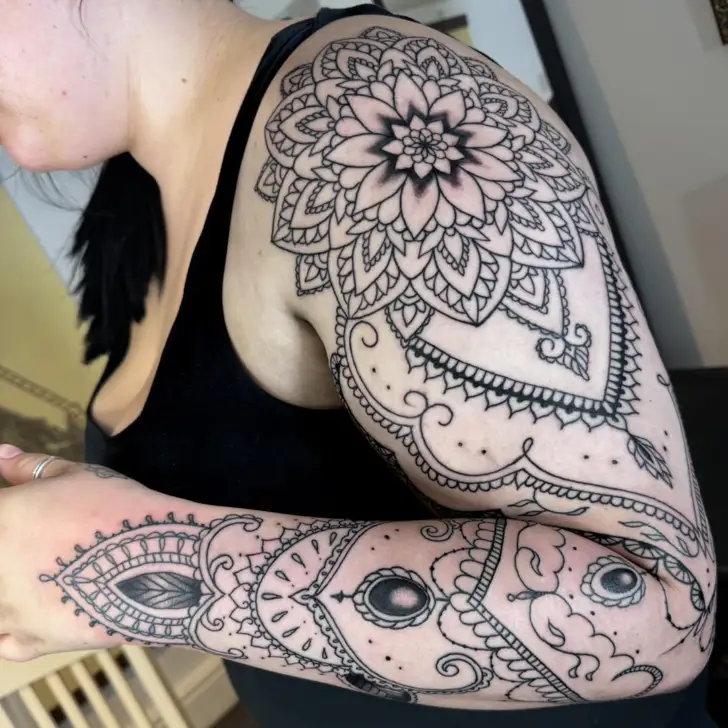
These tattoos can range from detailed depictions of landscapes to more abstract representations, but they always maintain a deep connection with nature. Whether it’s a flowing river on the forearm or a forest scene on the back, these tattoos offer a beautiful and meaningful way to carry the outdoors with you.
7. Portrait Freehand Tattoo
Portrait freehand tattoos are created by drawing a likeness of a person, animal, or character directly onto the skin, allowing for a more personalized and artistic interpretation of the subject. The freehand technique offers the artist greater freedom to adjust details, positioning, and style to fit the individual’s body and personal aesthetic.
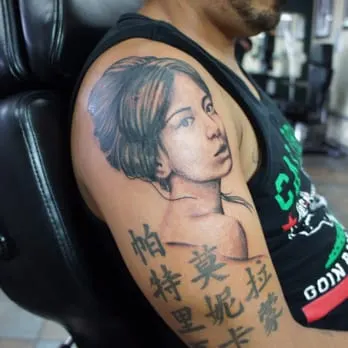
Unlike traditional portrait tattoos, which rely on stencils or tracing, freehand portraits capture a more fluid and dynamic representation, making them a unique and expressive form of body art. Portrait freehand tattoos often carry a deep personal meaning for the wearer, whether they are commemorating a loved one, honoring a role model, or expressing admiration for a subject.
8. Watercolor Freehand Tattoo
Watercolor freehand tattoos bring a splash of color and creativity to traditional tattoo designs. Using the freehand technique, the tattoo artist creates a design that blends fluid lines with vibrant, watercolor-like hues, giving the tattoo a more artistic, painterly feel. The lack of stencils allows for greater fluidity in the design, with colors flowing and blending seamlessly across the skin. Watercolor tattoos often have a dreamy, ethereal quality, and they work beautifully with abstract, floral, or animal-themed designs.
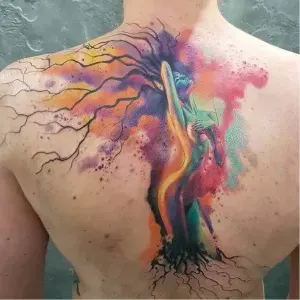
The freehand approach gives the artist the ability to create something unique, as the design can be shaped to fit the body’s contours and incorporate custom color schemes, making it a perfect option for someone seeking a one-of-a-kind tattoo.
9. Tribal Freehand Tattoo
Tribal freehand tattoos draw inspiration from traditional tribal art, but with a more organic, personal twist. These tattoos are created by the artist freehand, allowing for flowing, intricate patterns that are customized to fit the body’s shape and movements. Unlike traditional tribal tattoos that often rely on predefined patterns, freehand tribal tattoos are more fluid and less rigid, giving them a dynamic and personalized feel.
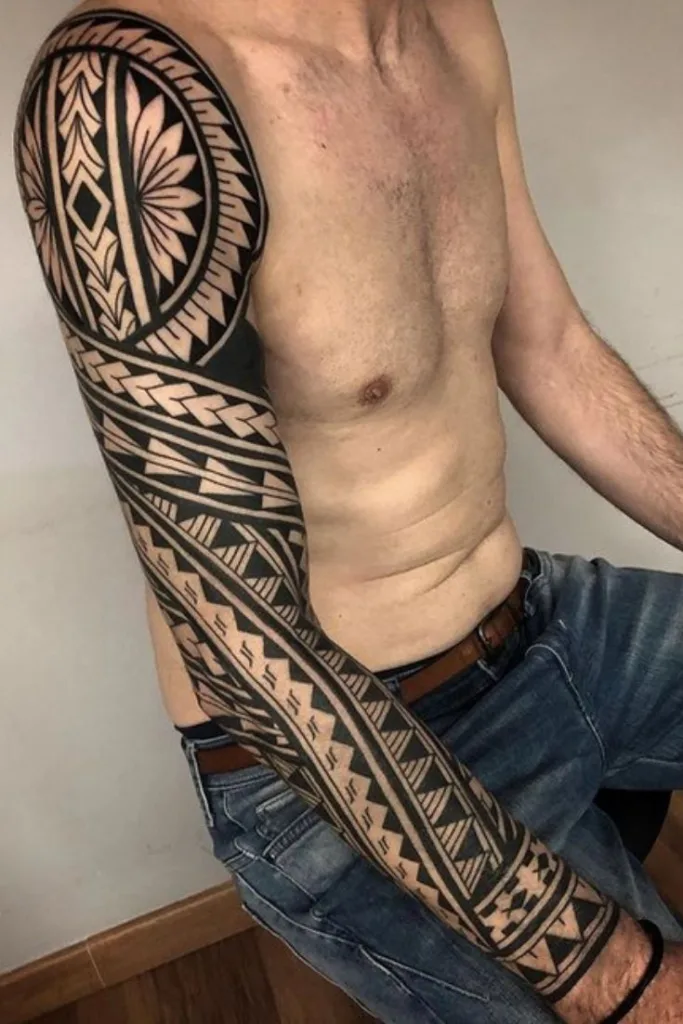
The bold lines and sharp angles of tribal tattoos can be adapted to work on various areas of the body, such as the arms, chest, or back, creating a design that enhances the wearer’s natural form. These tattoos are powerful symbols of strength, identity, and culture.
10. Abstract Line Freehand Tattoo
Abstract line freehand tattoos focus on the use of flowing, continuous lines to create a design that is both simple and intricate at the same time. These tattoos are drawn without the use of a stencil, allowing the artist to create organic shapes that flow naturally along the skin.
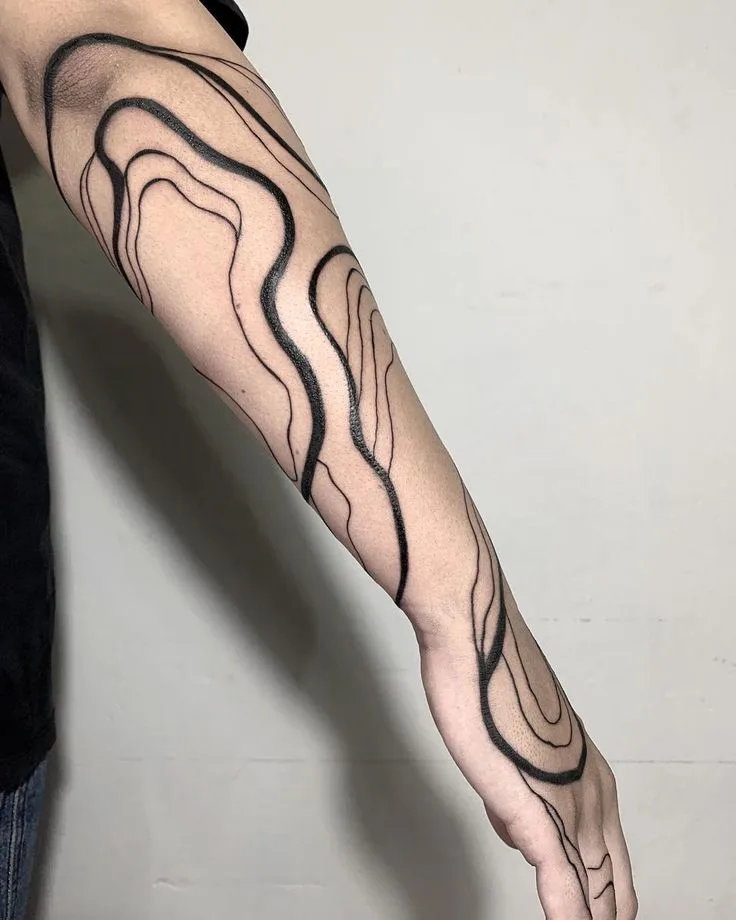
The beauty of abstract line tattoos lies in their minimalism and flexibility, as they can represent a wide variety of themes, from geometric shapes to more fluid, organic forms. This freehand tattoo style can be particularly striking when placed on areas such as the forearm, shoulder, or back, where the lines can interact with the body’s curves and contours to create a seamless, harmonious design.
11. Minimalist Freehand Tattoo
Minimalist freehand tattoos focus on simplicity and elegance, using clean lines and subtle designs to create a tattoo that feels both modern and timeless. The artist draws the tattoo directly onto the skin without a stencil, allowing for a more personal and fluid design process.
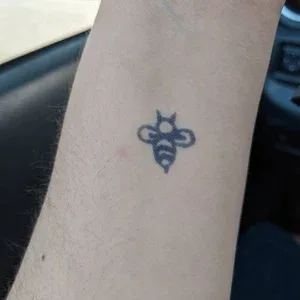
Minimalist tattoos often feature small, delicate symbols, such as hearts, stars, or words, that hold deep meaning for the wearer. These tattoos are ideal for those who prefer a more understated, subtle look but still want something unique and meaningful. The freehand nature of the design allows for customization, making it possible to incorporate elements that are particularly personal to the wearer.
12. Cosmic Freehand Tattoo
Cosmic freehand tattoos are inspired by the universe, stars, planets, and galaxies, offering a celestial and otherworldly design for tattoo enthusiasts. These tattoos are often created with the freehand technique, allowing the artist to use fluid lines and shapes to evoke the vastness and beauty of the cosmos.
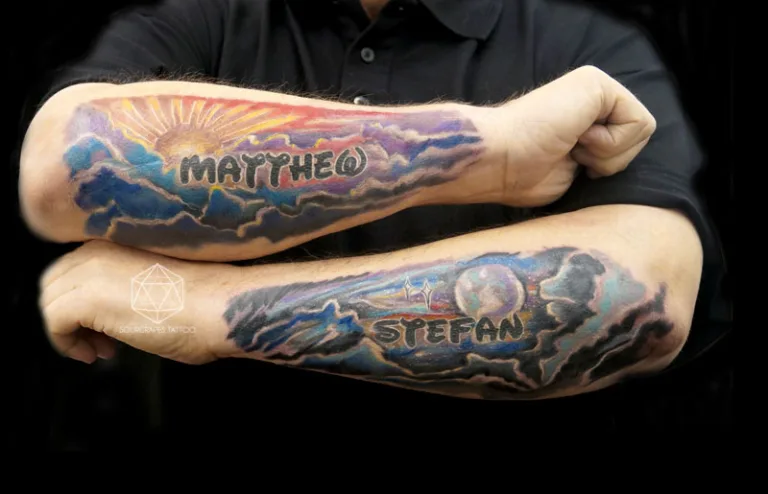
The lack of a stencil gives the artist freedom to create a tattoo that feels natural and integrated with the body. Cosmic tattoos can range from simple constellations to full-scale designs of galaxies and nebulae. This style is perfect for those who feel a deep connection to the universe or want a design that represents infinite possibilities.
13. Spiritual Freehand Tattoo
Spiritual freehand tattoos often feature sacred symbols, deities, or other elements related to spirituality and personal growth. These tattoos are drawn freehand, allowing the artist to create a design that feels fluid and deeply connected to the wearer’s personal beliefs.
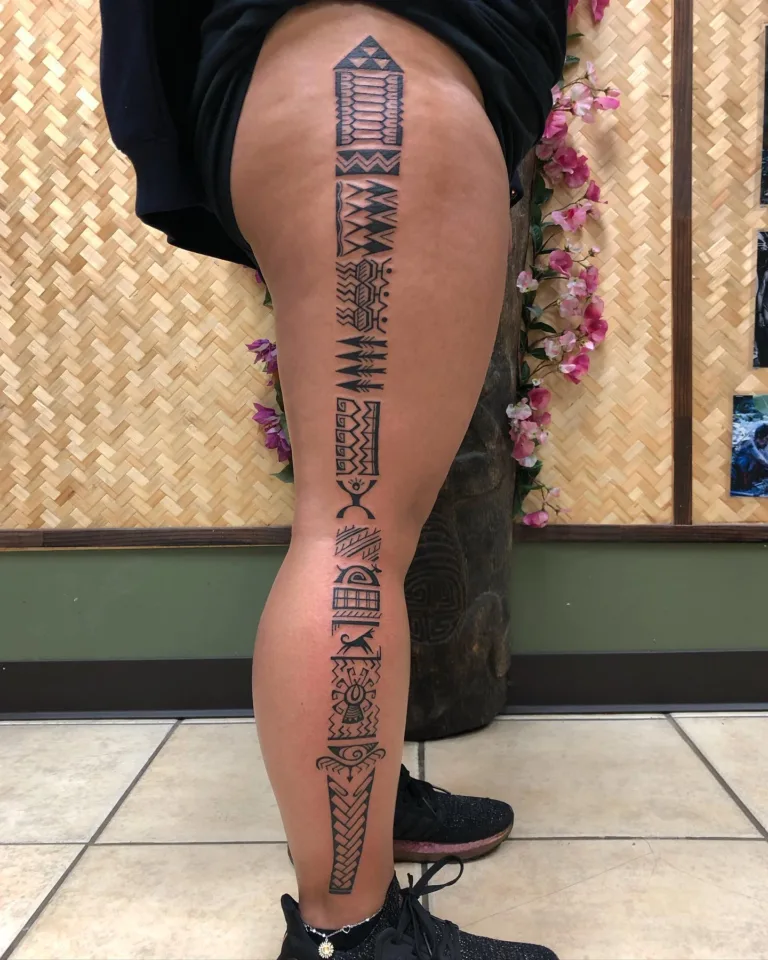
Spiritual tattoos might include symbols like the lotus flower, the tree of life, or intricate representations of deities. The freehand technique allows for a more organic, natural flow to the design, ensuring that it aligns with the body’s natural curves. These tattoos can represent healing, enlightenment, and connection to higher consciousness.
14. Surrealist Freehand Tattoo
Surrealist freehand tattoos blur the lines between reality and fantasy, often featuring dreamlike imagery and unexpected combinations. These tattoos are created without the use of stencils, giving the artist the freedom to combine elements in new and imaginative ways.
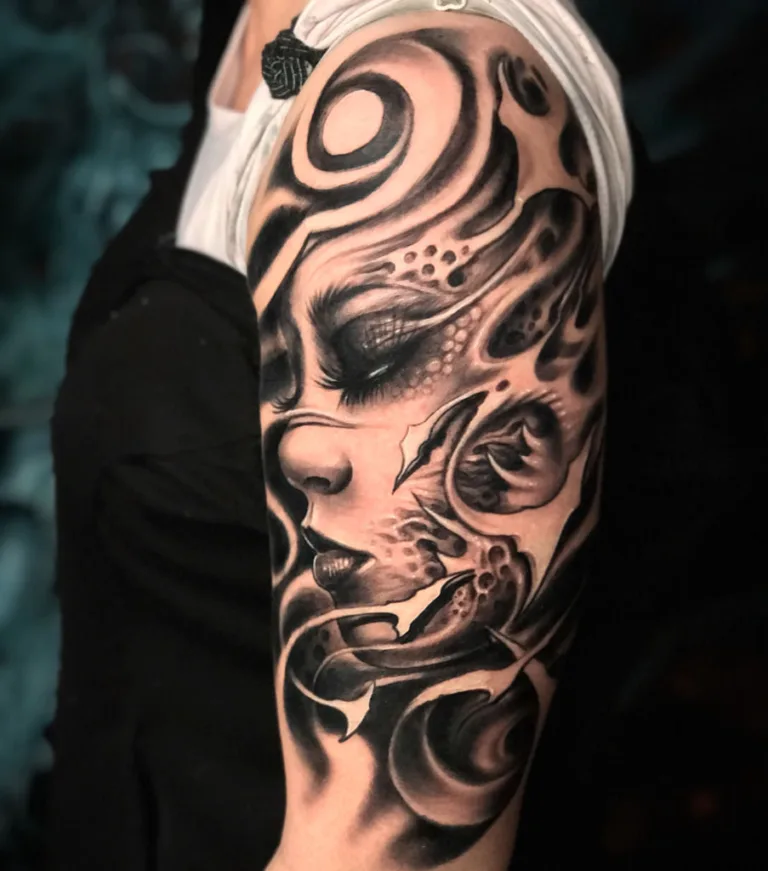
Surrealist tattoos may feature abstract landscapes, distorted faces, or fantastical creatures, all designed to evoke emotion and spark the imagination. The freehand style allows for fluidity and movement in the design, which is perfect for surrealist art’s flowing and often unpredictable nature. These tattoos are perfect for those who want something truly unique and thought-provoking.
15. Nature-Inspired Freehand Tattoo
Nature-inspired freehand tattoos are perfect for those who feel a strong connection to the outdoors. These tattoos often depict elements like trees, mountains, animals, or rivers, all created directly on the skin without the use of stencils.
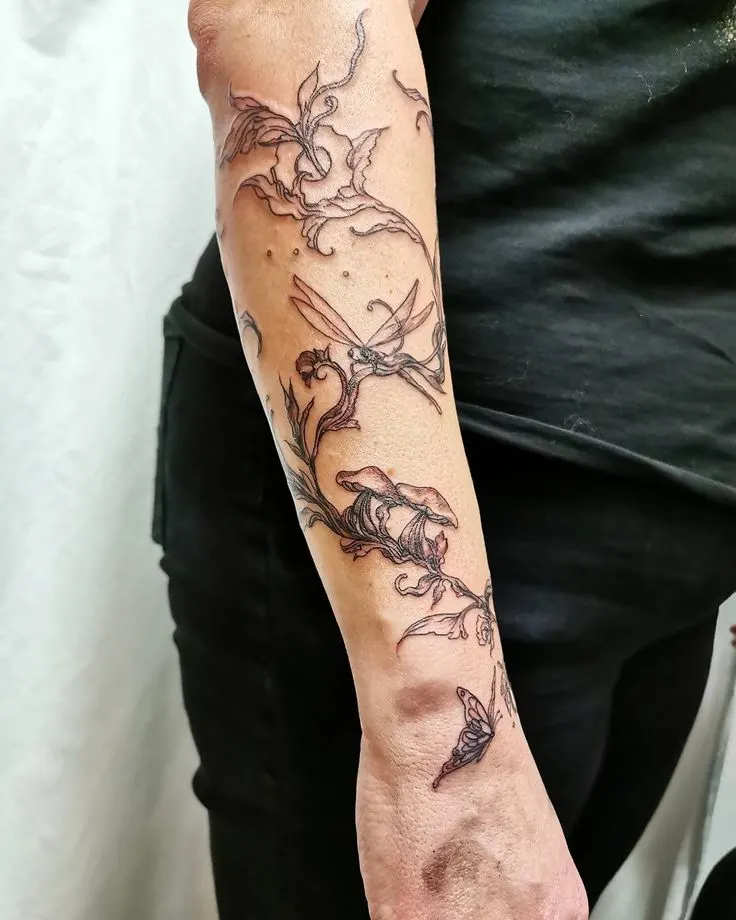
The freehand approach allows for a more organic, flowing design that complements the natural world’s irregularity and beauty. Whether it’s a tree wrapping around the arm or a mountain range stretching across the back, these tattoos offer a way to carry the beauty of nature with you. They can be deeply personal, symbolizing growth, strength, and a connection to the earth.
16. Horror Freehand Tattoo
Horror freehand tattoos bring elements of fear, suspense, and the macabre to life with dramatic and unsettling designs. These tattoos often feature creepy characters, skulls, or eerie creatures drawn directly onto the skin by the artist.
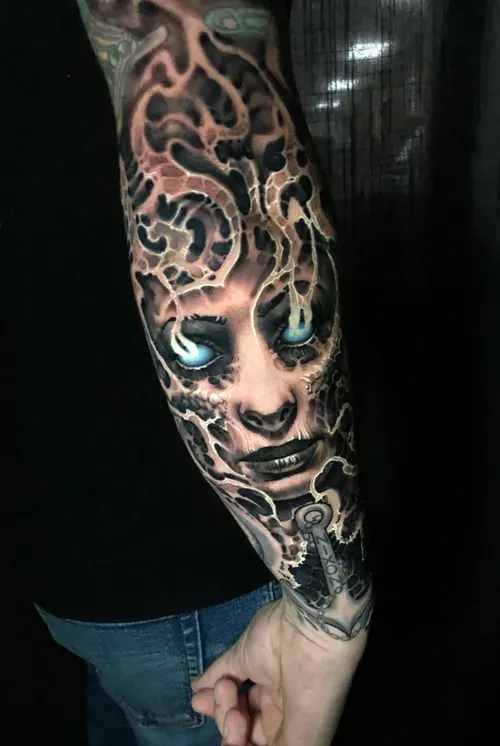
The freehand method allows for greater creativity, as the artist can add unique twists and details to the design, making it more chilling and personal. Horror tattoos can be deeply symbolic, reflecting inner fears or representing overcoming challenges. They are perfect for those who love the darker side of art and want a tattoo that evokes intense emotions.
17. Fantasy Freehand Tattoo
Fantasy freehand tattoos are inspired by mythical creatures, magical landscapes, and dreamlike worlds. These tattoos are often created without the use of stencils, allowing the artist to freely design imaginative and fantastical scenes. Fantasy tattoos may include dragons, fairies, castles, or enchanted forests, and they are often deeply personal to the wearer.
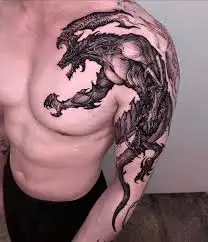
The freehand approach adds a unique, fluid quality to the design, enhancing the sense of wonder and mystery. Fantasy tattoos are perfect for those who want to carry a piece of imagination and magic with them, whether it’s a small symbol or a large, elaborate scene.
18. Cultural Freehand Tattoo
Cultural freehand tattoos are based on the traditions and symbols of a particular culture or heritage. These tattoos often include sacred symbols, folklore, or historical motifs that have deep significance to the wearer. The freehand method allows the artist to create these designs with a sense of authenticity, adapting them to fit the body’s natural form.
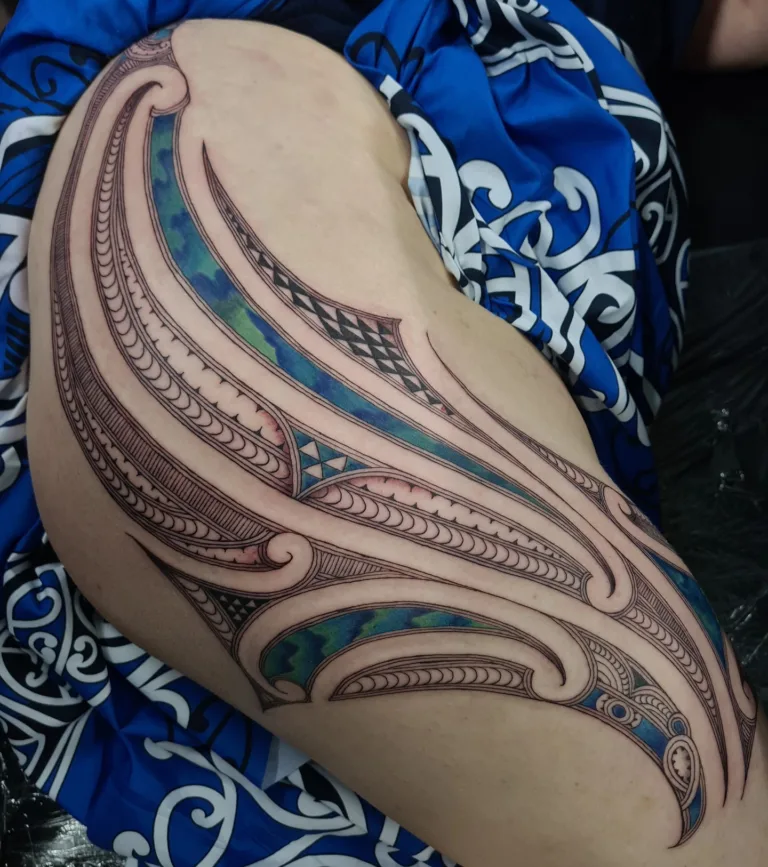
Whether it’s Polynesian tribal designs, Native American imagery, or African patterns, these tattoos offer a way to connect with one’s cultural roots. They can be bold and graphic or intricate and detailed, but they always carry a deep sense of pride and heritage.
19. Cosmic Freehand Tattoo
Cosmic freehand tattoos are inspired by the universe, stars, planets, and galaxies, offering a celestial and otherworldly design for tattoo enthusiasts. These tattoos are often created with the freehand technique, allowing the artist to use fluid lines and shapes to evoke the vastness and beauty of the cosmos.

The lack of a stencil gives the artist freedom to create a tattoo that feels natural and integrated with the body. Cosmic tattoos can range from simple constellations to full-scale designs of galaxies and nebulae. This style is perfect for those who feel a deep connection to the universe or want a design that represents infinite possibilities.
20. Personalized Freehand Tattoo
Personalized freehand tattoos are highly customized designs that incorporate unique symbols, words, or imagery meaningful to the wearer. By drawing directly on the skin, the artist creates a design that is one-of-a-kind and tailored to the wearer’s personal story or beliefs.
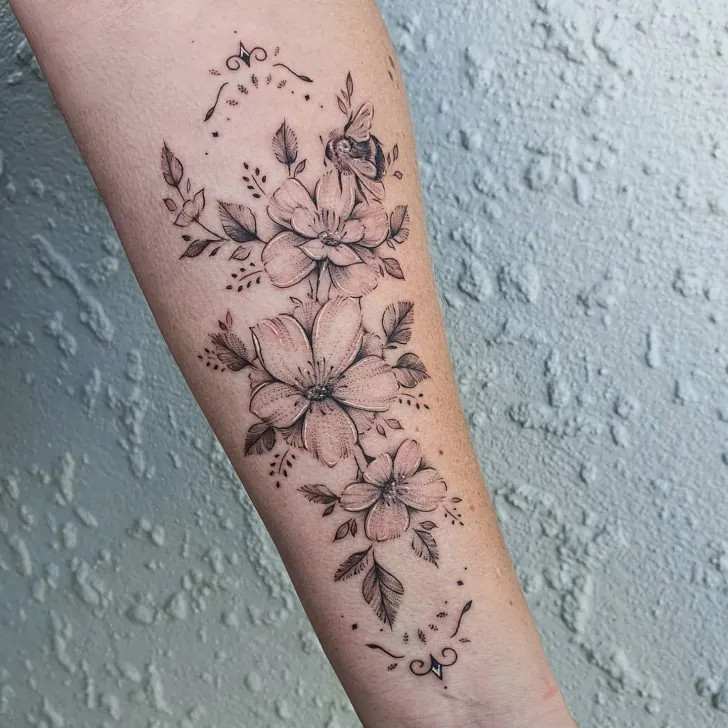
These tattoos can range from sentimental quotes to complex illustrations representing important life events or relationships. Personalized freehand tattoos offer a chance for deep self-expression and are perfect for those who want their tattoo to carry personal significance. The freehand process allows the artist to adapt the design to the body’s contours, ensuring a tattoo that feels unique to the individual.
Tattoo Aftercare Tips for Freehand Ink
Aftercare for freehand tattoos is no different from any other tattoo—but the stakes feel higher because of how personal and intricate the design is. Here’s how to protect your unique piece of art:
Listen to your artist. They know how their work heals and will give you advice that suits both your tattoo and your skin. Clean the area gently with mild soap, pat it dry, and avoid harsh rubbing.
Hydrate your skin with care. Use fragrance-free lotion or aftercare balm, applying a thin layer just enough to keep the tattoo moisturized without clogging your pores. Freehand pieces, especially those with heavy line work or shading, may scab or peel a bit more—so let your body do its thing.
Sun protection is a must. Bold, flowing freehand tattoos often sit in exposed areas. Once fully healed, use a tattoo-safe SPF to keep those lines sharp and vibrant.
Avoid overexertion or tight clothing that may rub and stretch the skin during healing. The more mindful you are during this time, the more flawless your ink will remain.
Final Thoughts
Freehand tattoos are the ultimate form of creative freedom—a handshake between the artist’s imagination and your body’s unique shape. There’s no pre-drawn stencil, no carbon-copy design, and no second version of what you walk out with. It’s just you, your story, and an artist who’s ready to bring it to life in real time.
This method isn’t just about getting tattooed—it’s about creating something with soul. Whether your freehand tattoo is large and intense or smooth and flowing, it reflects confidence, individuality, and trust in the artistic process.
So if you’re ready for a piece that’s as unique as your fingerprint, take the leap into freehand. It’s not just ink. It’s a collaboration between your body and art itself.
FAQs About Freehand Tattoos
1. What makes freehand tattoos different from regular tattoos?
Freehand tattoos are created directly on the skin without the use of a printed stencil. The artist draws the design by hand, allowing for more freedom, flow, and customization. This approach makes each tattoo one-of-a-kind and often results in designs that are better adapted to your body’s natural lines and curves. While traditional tattoos rely on transferring a precise image to the skin, freehand tattoos prioritize artistic interpretation and spontaneity. It’s ideal for people looking for unique designs that reflect a personal story, vibe, or visual rhythm. However, because freehand tattooing requires a high level of skill and confidence, you should only trust artists who are experienced in this technique.
2. Is it risky to get a freehand tattoo?
There’s always some risk involved when giving full artistic freedom to someone—but if you’ve done your research and chosen a qualified freehand tattoo artist, the risk is minimal. In fact, many seasoned tattoo lovers say freehand designs feel more tailored and natural. The key is to vet your artist thoroughly. Look at their previous freehand work, check reviews, and ask questions during your consultation. Make sure you’re comfortable with their vision and trust their instincts. Communication is essential—share your ideas, your story, and your comfort zones, then let them do what they do best.
3. Do freehand tattoos take longer to complete?
They can, depending on the complexity and scale of the design. Since there’s no stencil, your artist will likely spend more time sketching directly onto your skin before even starting the tattoo machine. The tattooing itself might also take longer due to continuous improvisation and adjustments. However, many artists who specialize in freehand work are efficient and focused, so the process balances out. If your piece is large or spans multiple body parts (like a sleeve or back piece), you may need multiple sessions. Don’t rush it—freehand work is an art form, and the best results come from giving it the time it deserves.
4. Can I ask for specific elements in a freehand tattoo?
Yes—freehand doesn’t mean random. In fact, collaboration is key. Before the session, you can absolutely share specific symbols, cultural elements, themes, or styles you’d like to include. A good freehand tattoo artist will take your input and build a flowing, customized design around it. You might not see an exact replica of what’s in your head, but you’ll get a unique version that feels personal and expressive. That’s the beauty of freehand: it blends your vision with the artist’s creativity to create something neither of you could have imagined alone.
